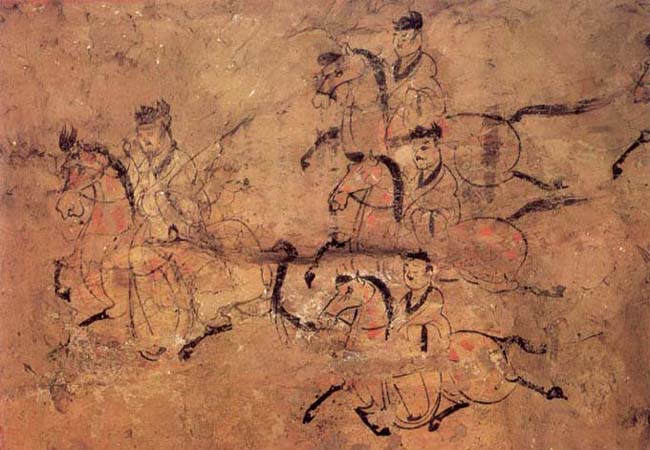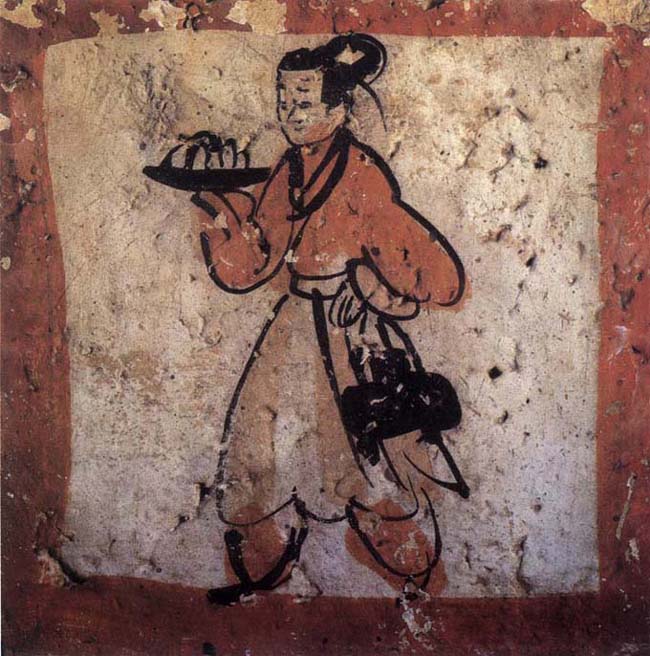The period of the 魏晋 (, 220-420) Dynasties marks a crucial turning point in the history of Chinese art. This era of political fragmentation following the fall of the 汉朝 () saw the birth of major innovations in calligraphy, painting, and Buddhist spirituality, laying the foundations for classical Chinese art.
Chronology of the Wei and Jin Dynasties
- 220: Beginning of the 三国 () - Three Kingdoms, advent of the 魏 () Kingdom in the North. Death of 曹操 ()
- 221: Foundation of the 蜀 () Kingdom in the West
- 222: Establishment of the 吴 () Kingdom in the Southeast
- 265: Beginning of the 西晋 () Dynasty - The Sima family restores imperial unity
- 310: Great Migration of Chinese elites to the South
- 317: Beginning of the 东晋 () - North/South Division: nomadic peoples in the North, Chinese aristocracy in the South
- 353: Foundation of the Buddhist sanctuary of 敦煌 (), future jewel of religious art

The Journey
Wall painting (36 × 120 cm) illustrating the travels of the aristocracy

Servant Presenting a Dish
Detail of wall painting (17 × 17 cm) showing daily life
Masters of Wei-Jin Art
This revolutionary period saw the emergence of creative geniuses who durably transformed Chinese arts:
Legendary Calligraphers
- 王羲之 (): "Sage of Calligraphy," creator of the semi-cursive style
- 钟繇 (): Pioneer of regular calligraphy 楷书
- 卫烁 (): Female calligrapher nicknamed 卫夫人 (Lady Wei)
Founding Painters
- 顾恺之 (): Master of the spiritual portrait "以形写神"
- 曹不兴 (): Pioneer of Buddhist painting
- 陆机 (): Theorist of "文赋" on artistic expression
Cultural Revolution
The collapse of the Han order provoked an unprecedented intellectual ferment:
- Emergence of philosophical Taoism 玄学 ()
- Massive development of Buddhist art via the Silk Road
- Birth of art criticism with the 六法 () - Six principles of painting
The legacy of the Wei-Jin continues in classical Chinese painting and the contemporary practice of calligraphy.
